We’re back with Part 2 in our series on Harnessing the Power of Knowledge Management. If you missed Part 1 on Taxonomy Management, you can read it here.
When an association crafts a body of knowledge, they are implicitly setting up a system of interrelated principles, competencies, terms, and other concepts.
This is a great start to building a content universe! We now know the building blocks that connect everything inside. This is what we talk about when we discuss creating taxonomic hierarchies in Harnessing the Power of Knowledge Management Part 1: Taxonomy Management.
But now that we know how to relate objects to one another, we need the objects themselves. Enter learning objects.
What are Learning Objects?
Learning objects are pieces of content that learners interact with to gain the required knowledge and specialization they need in their field.
For example, HC maintains the following objects for our associations:
- Learning material (topics, tables, terms)
- Test-taking objects (test items, quizzes)
- Downloadables (EPUBs, PDFs)
- Products (certifications, micro-credentials, learning systems, assessments)
- Web content (articles, news, websites, videos)
Now, before we begin tracking every single item a learner could possibly interact with, it’s important to first understand why we are tracking these objects in the first place.
Here are our criteria for determining if we need to track a learning object:
- Do we need to measure learner behavior surrounding the object?
- Do we need to see how the object relates to other objects?
- Could we provide value to a learner by sharing that object with them?
Let’s look at topics and test items as an example. If a learner has seen a topic and does not perform well on test items that cover the same concepts as in that topic, can we help the learner with some recommendations on what to study next? Can we also look at the topic and/or test item to make sure they’re at their quality potential?
And if we consider web content, are there useful articles and videos we can share with learners based on their interactions and performance with specific concepts?
In both cases, we’ve established value-adds for the learner and can work backward to track the related objects.
Storing Information About Learning Objects
One of the biggest issues in tracking these objects is that they live in disparate systems. Our topics and test items may live in a DITA (Darwin Information Typing Architecture) content management system, but products may appear on different store pages or in multiple APIs.
To simplify learning object management, we need to create pointers to these resources with any relevant metadata we want to observe and use for building relationships. This almost always includes concepts from our taxonomies, but it may also include publication date, types and subtypes, source IDs, hyperlinks, and more.
Most importantly, these pointers live in one place in a standard, normalized format.
What’s Next?
So far, we’ve discussed Knowledge Management pillar 1: taxonomy management as the bedrock of creating connections in our content universe; and pillar 2: learning object management for filling our content universe. The final step is to merge our taxonomy and learning objects into a knowledge graph.
Stay tuned for Part 3 of our series on Knowledge Management, where we tackle the benefits of graph databases and relationships as data points.
If you don’t have the expertise on staff, but you’re ready to create a Knowledge Management plan, or if you’re curious if this might be a benefit to your Association, HC can help. Reach out to us at [email protected] to get started.







